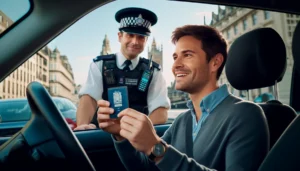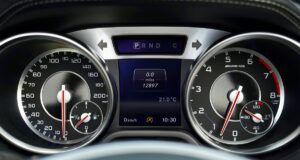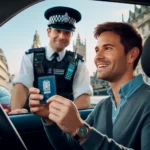If you find yourself having to sell a car that was owned by someone who’s passed away, this guide will take you through the process, simplifying it as much as possible.
Important information to bear in mind
Before you start the process of selling a deceased person’s car, there are a few important considerations:
- Insurance. If you need to drive the car in the immediate aftermath of a loved one’s passing and the vehicle was insured in their name, you will have to contact the insurance company to check if you’re covered – even if you were a named driver on the policy. Insurance policies usually automatically close if the main policyholder dies, so if the car was insured in your loved one’s name you may not be insured to drive it. It’s also worth remembering that when the insurance policy terminates, the vehicle will no longer be covered against fire or theft.
- Your status. Your relationship to the person who has passed away can have an impact on how the car’s ownership is handled: a spouse, for example, would have a different legal status to a cousin, so various elements of this guide may or may not apply to you. Speak to a solicitor for clarity on whether you’re able to sell the vehicle.
- Legal ownership. This guide presumes you are legally entitled to sell or transfer ownership of the car. If you are in any doubt about ownership of the car, who it will pass to, who has the right to sell it, or any other detail, you should seek legal advice. This guide does not constitute legal advice and the process of selling the car of a loved one who has passed away can vary depending on your circumstances.
If you are legally entitled to sell the car of a loved one who has passed away, we will outline the following three stages that can be involved in selling or transferring ownership, then go into more detail on each individually.
- Notify the DVLA of the person’s death.
- Transfer ownership of the car with the V5C logbook.
- Selling the car.
1. Notify the DVLA of the person’s death
The Driver and Vehicle Licensing Agency (DVLA) must be informed when someone has died, so they can cancel their driving licence: they will also be removed as the registered owner of any vehicles, while the car’s VED tax will also be cancelled.
You can contact the DVLA directly to notify them, or use the government’s Tell Us Once service, which enables you to report a death to most government organisations – such as the Passport Office, HM Revenue and Customs and the deceased’s local council – in one go.
Tell Us Once service is available in most parts of the country, but if you can’t or don’t want to use it, you can write to the DVLA sharing the following information:
- The name, address and date of birth of your loved one.
- The date they died.
- Your relationship to them.
If you have it, you should include the deceased person’s driving licence with your letter, but not the death certificate.
Send all these details to:
DVLA,
Swansea
SA99 1AB
You should bear in mind that when you take this step, the car will become untaxed: it must be retaxed if it is to be driven on the public road. Alternatively, you can make a Statutory Off Road Notification (SORN) if you want to keep it, but not drive it on the road. You should take either of these two steps as soon as possible: don’t wait to hear back from the DVLA.

The V5C, or logbook, changed format in April 2019, so make sure you know which kind you have before filling out any sections
2. Transferring ownership of the car using the V5C logbook
It’s widely believed that the DVLA form known as V5C, or logbook, is that it shows who owns a car – it does not, instead only indicating to whom a vehicle is registered.
As a car cannot be registered to someone who is deceased, you need to inform the DVLA if you want to keep it or transfer the registration of the vehicle to a friend or family member.
If you decide to transfer ownership of the car, fill in section 2 of the V5C (section 6 if you have the old-style V5C, which were issued up to 15 April 2019). Tear the green ‘new keeper’ slip off, retaining it.
Write to the DVLA, establishing:
- Your relationship to the person who has passed away.
- The date they died.
- Who should be paid any road tax refund, as this cannot be transferred with a vehicle.
Send the letter, together with the V5C (excluding the ‘new keeper’ section you’ve torn off), to:
DVLA
Sensitive Casework Team
Swansea
SA99 1ZZ
The green ‘new keeper’ section will allow you to tax the car, which you should do before you receive the new V5C, which will arrive in the post.
What if I can’t find the V5C logbook?
If you can’t find the V5C among the deceased person’s belongings, you can order a replacement online, by phone or by post, using the DVLA’s Duplicate Vehicle Log Book service. This service costs £25 – and there are no refunds if the original V5C turns up.
To apply online, you need the car’s registration number, its VIN/chassis number, the name and postcode registered in the log book. You should get a replacement V5C within five working days.
Alternatively, you can contact the DVLA on 0300 790 6802 to order a duplicate log book. As with the online application, you need to give them the registration number and VIN, and the name and postcode on the log book. Applying by phone takes around four weeks.
If you need to change the address at the same time as obtaining a replacement log book, you have to apply by post. If your current address doesn’t match the log book, you can’t apply online or by phone.
You must also tell the DVLA about any major changes to your car too, such as any changes to the colour, chassis or seating capacity. In this instance, you must fill in form V62 and send it to:
DVLA
Swansea
SA99 1DD
It usually takes around four weeks to get a duplicate V5C by post.
4. Selling the car
Selling to an individual
It is possible to transfer the car’s registration to yourself and then sell it. However, there are a couple of drawbacks: the car may be worth less if it has an additional keeper; and it can take time for a new V5C to be issued, adding a delay to the process.
If you wish to sell the car privately without first transferring it to yourself, you need to write to DVLA’s sensitive casework team explaining that you are selling the car, while also detailing your relationship to the person who has passed away, the date they died, and to whom any road tax refund should be paid.
Along with this, you need to complete section 2 of the V5C – ‘selling or transferring my car to a new keeper’ (this is section 6 for the old-style V5C). Next, you fill out the green ‘new keeper’ section and give it to the car’s buyer. You then send the rest of the V5C to the DVLA’s sensitive casework team, along with your letter.
Selling to a dealer
From the DVLA’s perspective, selling the car of a loved one to a trader is relatively straightforward.
You must write a letter with the same information you’d include if selling privately, and get the trader to fill out the section of the V5C headed: ‘sell, transfer or part-exchange your vehicle to the motor trade’. You should tear this section out and send it with your letter to the DVLA’s sensitive casework team, while the trader keeps the remainder of the V5C.
However, a dealer may want to see evidence that you are entitled to sell the vehicle before they buy it, while the size of the estate and who is managing it may affect what documentation they want to see. It is possible to sell a car before probate has been granted, but you may not be able to sell the car to a trader without a death certificate.
Among the documents that a trader may want to see before buying a deceased person’s car would be:
- The deceased person’s death certificate.
- A letter or email from the solicitor of the estate, granting authority for the car to be sold and stipulating to whom payment should be made.
- Photo ID of the next of kin or the executor of the estate.













